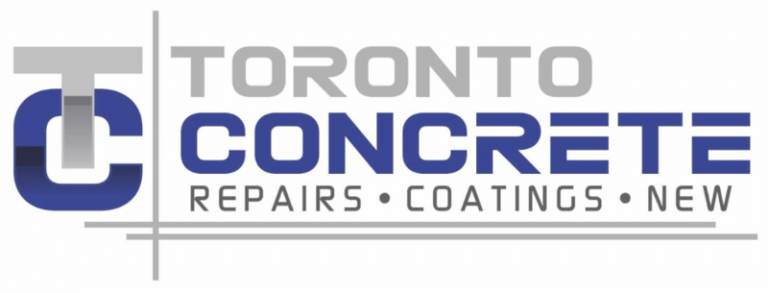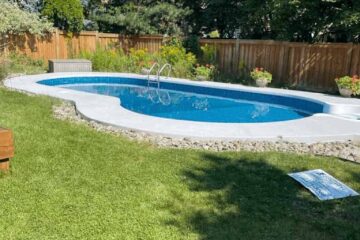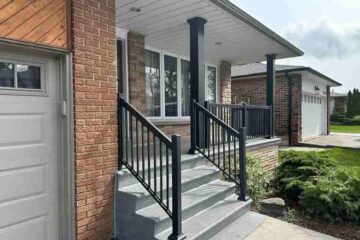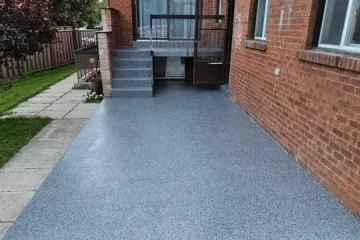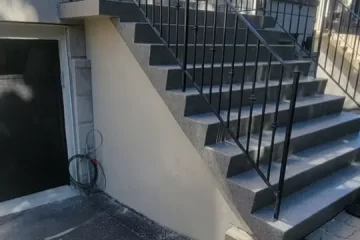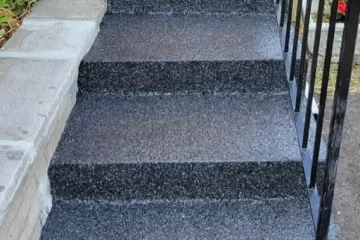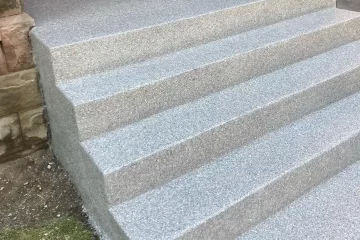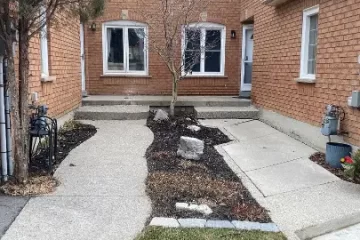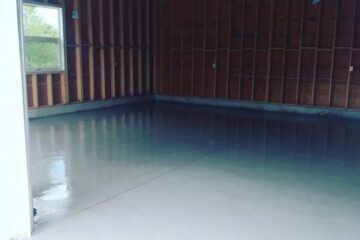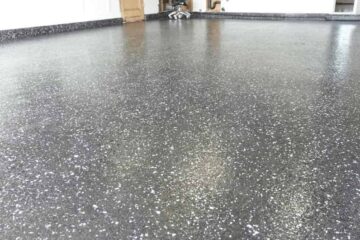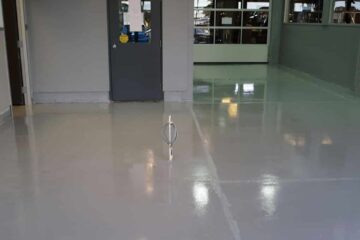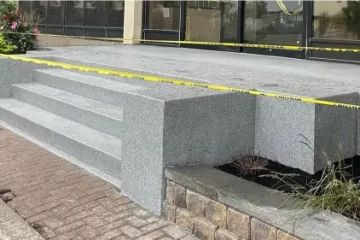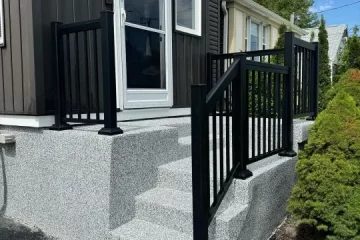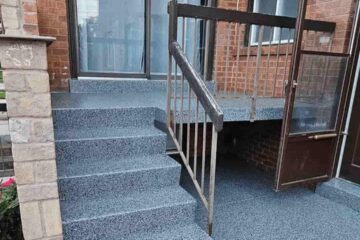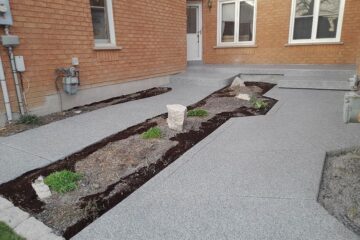You are Here: BLOG / CONCRETE RESURFACING PROS AND CONS WITH EXPERT ADVICE
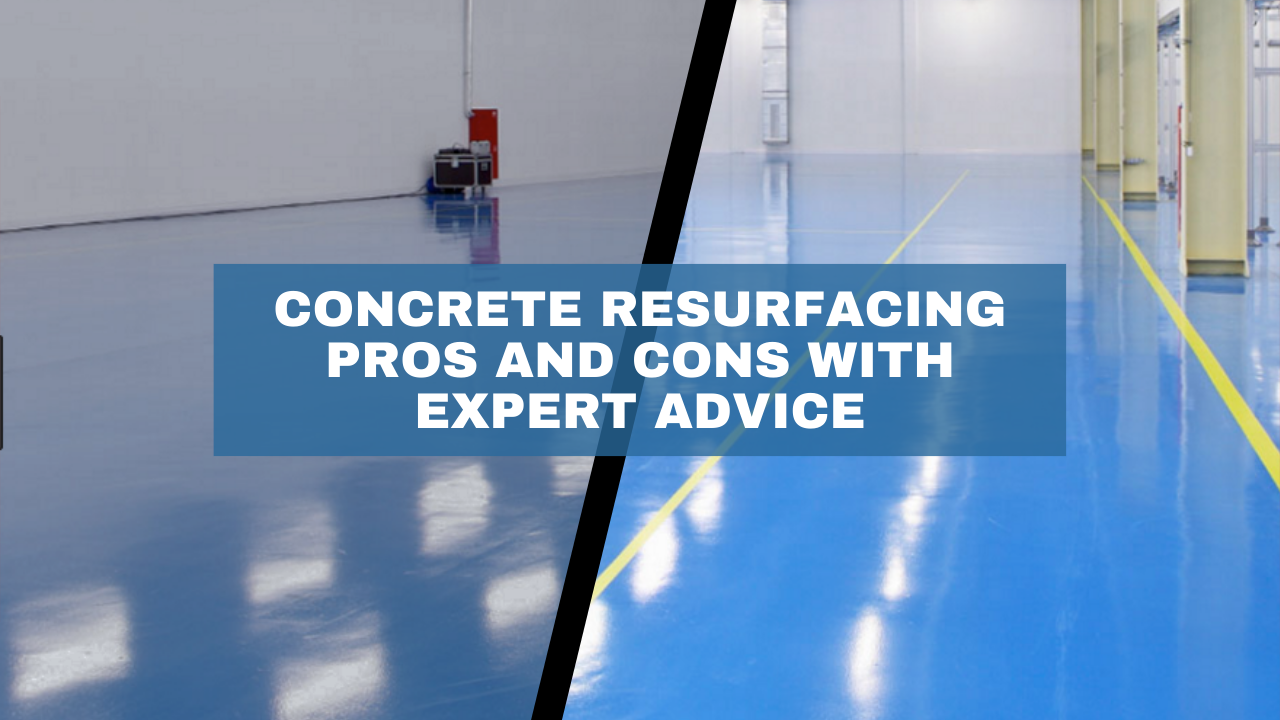
CONCRETE RESURFACING PROS AND CONS WITH EXPERT ADVICE
By TorontoConcreteRepair on August 24, 2024
Concrete resurfacing is a concrete restoration method that’s both practical and budget-friendly. Whether you’re dealing with a cracked driveway or a worn-out patio, resurfacing can breathe new life into your space.
However, like any home improvement option, it’s essential to weigh the benefits and drawbacks before proceeding.
Concrete resurfacing is ideal when the surface has minor cracks, discoloration, or wear but is structurally sound. It’s cost-effective and enhances appearance. However, it’s not suitable for deep cracks or severe damage. Factors like surface condition, long-term durability, and budget should influence the decision between resurfacing and full replacement.
Concrete Resurfacing PROs and CONs
Concrete resurfacing involves applying a concrete overlay or concrete coating to restore an existing surface. This process is ideal for surfaces that are still structurally sound but need a cosmetic upgrade.
You might consider resurfacing for minor surface issues like surface cracking, discoloration, or light spalling. Unlike full concrete replacement, resurfacing focuses on repairing surface-level flaws while leaving the foundation intact.
The Concrete Resurfacing Process
Resurfacing starts with thorough surface preparation, including cleaning and repairing any cracks or pitted areas. Next, a resurfacing compound is applied. This self-leveling mixture, combined with bonding agents and polymers, creates a smooth, durable finish.
You can opt for additional texture enhancements such as slip-resistant finishes or decorative patterns. Finally, the surface is sealed to protect against wear and tear, extending its longevity.
RECENT POSTS
- Porch Makeover Ideas for Toronto Homes: Concrete Solutions for Curb Appeal
- What Is The Difference Between Concrete Resurfacing And Concrete Overlay?
- New Concrete Driveway Installation: A Successful Project by Toronto Concrete Repair Inc.
- How to Remove Water Stains & Discolouration from Newly Poured Concrete
- Concrete Resurfacing Pros and Cons
- Concrete Resurfacer vs Self-Leveling: Which Is Right for Your Project?
- Concrete Resurfacing vs Replacement: Which Option is Best for You?
- Concrete Repair vs. Replacement: A Comprehensive Guide
Book a FREE Consultation Call
PROs of Concrete Resurfacing
Cost-Effective Solution
Resurfacing is typically more affordable than full replacement. The use of resurfacing compounds and concrete overlays makes it possible to rejuvenate large areas without the high costs associated with new concrete installations.
Quick Installation and Minimal Disruption
Compared to replacement, resurfacing is quicker and less invasive. Most projects, from driveway resurfacing to concrete patio upgrades, can be completed in a few days. This is especially appealing for busy homeowners who need fast results.
Aesthetic Improvements
Resurfacing offers a wide array of decorative concrete finishes. Whether you’re interested in stamped patterns, colored overlays, or a simple textured finish, resurfacing provides ample opportunities for customization. You can mimic natural stone, brick, or create unique designs tailored to your style.
Eco-Friendly Option
Resurfacing is more environmentally friendly because it reuses existing concrete instead of contributing to landfill waste. Additionally, many resurfacing products are made from low-VOC materials, which reduce the emission of harmful chemicals during installation.
Enhanced Durability with Proper Maintenance
Resurfaced concrete is durable and long-lasting when maintained correctly. Applying a high-quality sealant ensures protection against moisture, cracks, and potential delamination. Regular resealing and moisture control measures can significantly extend the life of your resurfaced concrete.
CONs of Concrete Resurfacing
Limited to Surface-Level Repairs
Resurfacing is best for addressing minor flaws. Deep structural problems, such as severe surface cracking, sunken slabs, or spalling, require more intensive solutions like full replacement.
Shorter Lifespan Compared to Full Replacement
While resurfaced concrete can last 10 to 15 years, its lifespan is generally shorter than new concrete, which can last 30 to 50 years. For areas subjected to heavy use, such as high-traffic areas or commercial floors, you might need to consider more durable options.
Not Suitable for Severely Damaged Concrete
Concrete with extensive damage—whether due to moisture issues, large cracks, or poor adhesion—isn’t a good candidate for resurfacing. In such cases, starting fresh with a complete replacement is often the better route.
Quality Depends on Existing Surface Condition
The success of resurfacing is closely tied to the condition of the underlying concrete. Poorly prepared surfaces, large aggregate exposure, or incorrect curing times can lead to premature failure or imperfections in the finish.
Comparing Concrete Resurfacing vs. Replacement
For those who prioritize budget and speed, resurfacing is the way to go. It’s ideal for structurally sound surfaces that need a facelift, such as driveways and patios. On the other hand, replacement is more suitable when dealing with large cracks, unstable foundations, or when long-term durability is a must. If you want to read more about the difference between concrete resurfacing vs replacement you can read our detailed article.
Common Use Cases for Concrete Resurfacing
Resurfacing works well for:
- Driveways: Improve curb appeal without tearing up your existing driveway.
- Patios & Walkways: Upgrade outdoor living spaces with stylish finishes.
- Garages: Enhance durability and slip resistance in high-traffic areas.
- Floors:Resurfacing can be used to improve the astethic appeal of floors whether it is basement floor, or commercial warehouse.
- Pool Decks: Improve the quality and grip around pool decks to improve the safety & appeance.
Factors to Consider Before Choosing Resurfacing
Before deciding, assess the current condition of your concrete. Consider factors like your budget, long-term goals, and the aesthetic changes you want. Resurfacing is ideal for improving looks and adding a few more years to your concrete’s life, but it’s not always the best solution for severe structural issues.
How Long Does Concrete Resurfacing Last?
Resurfaced concrete typically lasts up to 15 years, depending on use and maintenance. Regular sealing, cleaning, and careful protection from heavy impacts help extend its longevity. Be mindful of high-traffic areas, as they may require more frequent attention.
DIY vs. Hiring Professionals
DIY resurfacing kits are available, but they often lack the professional finish you’ll get from an experienced contractor. Poor surface prep or improper application can lead to cracking, peeling, or delamination. Hiring a professional ensures quality results and minimizes risks.
Maintaining Resurfaced Concrete
Proper maintenance is key to getting the most out of resurfaced concrete. Routinely clean the surface, reseal every few years, and avoid harsh chemicals and heavy impacts that could damage the finish.
The Costs Involved in Concrete Resurfacing
Resurfacing typically costs between $3 and $10 per square foot, depending on design complexity and area size. While more affordable than replacement, intricate designs and additional features can increase costs.
Environmental Impact of Concrete Resurfacing
Opting for resurfacing over replacement reduces waste and saves resources. Using eco-friendly materials, low-VOC products, and recycling existing slabs contribute to a more sustainable renovation.
FAQs
Can concrete resurfacing be done in cold weather?
Yes, but it’s best to resurface concrete in temperatures between 50°F and 85°F. Cold weather can slow down curing and affect adhesion.
What decorative options are available with resurfacing?
You can choose from stamped patterns, textured finishes, colored overlays, and more. These options allow you to mimic materials like stone, brick, or tile.
How do I know if my concrete is a good candidate for resurfacing?
Your concrete is a good candidate if it’s structurally sound with only minor surface imperfections. Large cracks, sinking, or severe damage may require replacement instead.
Is resurfacing suitable for high-traffic areas?
Yes, with proper maintenance and sealing, resurfaced concrete can withstand high traffic. It’s commonly used in driveways, commercial floors, and other busy areas.
How long does it take for resurfaced concrete to fully cure?
Resurfaced concrete typically takes 24 to 48 hours to dry, but full curing can take up to 28 days. Avoid heavy use or pressure during this curing period.
Final Verdict: Is Concrete Resurfacing Right for You?
Concrete resurfacing is a great option if your existing slab is in good shape and you’re looking for a budget-friendly, customizable solution.
However, for surfaces with severe damage or long-term investment goals, replacement might be the better choice. Make sure to evaluate your needs and consult with a professional to determine the best approach.
Still if you have any confusion, or want to ask questions more about resurfacing, you can contact us, we are happy to assist you anyhow. You can reach out to us over a phone call or from email or from our social media page.
